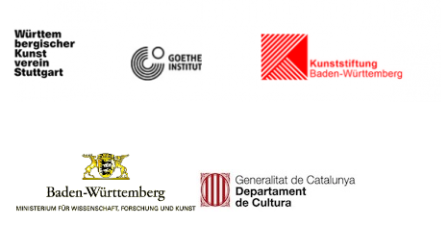Paratext #38 with Jhouyu Hsieh, Simon Pfeffel, Shaotong He and Consol Llupià

This name, Paratext, hides a monthly schedule of presentations of artists residing in Hangar of long and short duration, as well as international residencies. In it they present, in different formats, specific projects or parts of their work. The sessions are always open to the public with the purpose of enabling interaction with the artists themselves. In addition, each Paratext has an editor who later publishes his or her impressions of the presentation on this blog. On this occasion the editor will be Lara Garcia Diaz.
The next Paratext session will take place on Tuesday October 22, at 7 p.m. in the Sala Ricson of Hangar.
Projects will be presented by:
Based in Taiwan, Hsieh Jhouyu has been the youngest artist to have an individual exhibition at the Taipei Museum of Fine Arts. Her most recent works reveal a concern for the symbolic and archival issues of desire. She also explores the possibility of Taiwan’s contemporary colonization outside the operation of life politics. Jhouyu has MS degree in Trans-disciplinary Arts from the National Taipei University of Arts and has a BS degree in Art History, with a double major in Research and Relics Protection, from the Tainan National University of the Arts.
In his artistic practice, he creates situations whose appeal to him is that the development and the goal are not to be foreseen at the outset because decisions are not borne by him alone. His performances are starting points for human relationships, during which he becomes increasingly passive and gives the situation off bit by bit to the recipients. The sense of responsibility of these persons evolves to the same extend and their relationship of trust develops. The resilience of this confidence is tested by the duration of his actions.
Trust evolves through time. The disappointment of a loss of trust increases higher than the confidence itself could take roots before. But a possible failure always implies a possible success, and so we have to get reliant on someone to evolve ourselves.
A major attempt of He Shaotong’s artistic practice is to explore the possibilities of art displaying in site-specific/physical-space-independent ways. In his working principle, art spaces shall not play a role of the terminal of art production, which in a certain level remains a hierarchy of “seeing”. Mostly in this sense, he avoids orienting art works to fit the art-space-standards, but intends to make the experiencing happen in more variable ways and dissolve the hierarchy of “original” and “reproduction” of image.
Though many of his works have performative features, are not intended to reach a large public nor enable sensational live experience. Nevertheless, they had their one and only privileged “witness”, which might include such as surveillance cameras and satellite etc. For all the other audiences equally, there are the documentation or the reproduction of these works in various media to view, namely the “second hand” images.
I’m the work of art.
Consol is a facilitator of open processes, she opens interdependent collective dialogues to take to the extreme the question of the permeability of the context.
She conceives artistic practice as a porous dialogue with the experiences that happen to her on a daily basis, in a predefined contextual framework and through the networks of direct and immediate human relationships.
She proposes these open and collective processes as artistic practice.
It is said she resembles process art.
Photo: Jhouyu Hsieh, Capital Project, 2016

![]()

Categories: Paratext |
